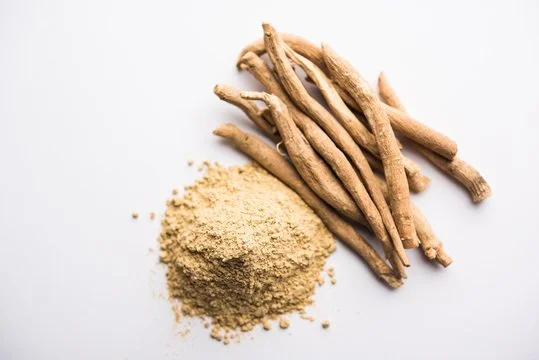Ashwa-wha?
Ashwagandha. Heard of it? Given this herb’s soaring popularity in recent years, my guess is yes!
Ashwagandha is also referred to as Withania, Indian Ginseng, and/or Winter Cherry. Its botanical name is Withania somnifera. Primarily the root is used in medicinal products. From here on, I'll call this herb Withania instead of Ashwagandha.. because my conditioning runs deep! ;) ;)
What does it do?
Withania has been extensively researched and is a super impressive herbal medicine. In traditional Ayurvedic medicine, Withania is considered to promote energy, endurance and stamina. It is a famous adaptogen, meaning it can help facilitate an optimal stress response. It's also well known to reduce anxiety, aid sleep, boost male fertility and lift thyroid function.It’s traditionally referred to as a “rejuvenator of brain and mind” and has been shown to have cognitive enhancing, neuroprotective, mood elevating and immunomodulatory actions. It’s also considered to be quite warming, earthy, nourishing and ‘blood building’, and is great for those who are convalescing from illness, are malnourished or have low iron.It's a gentle herb that is both a male and female tonic. It's perfect for those who are wired but tired.
Preparations and Potency
Traditionally, the root is ground into a fine powder, which is either boiled in milk or added to a mix of honey and ghee. More modern use involves tinctures and standardised tablets/ capsules. Standardised and concentrated extracts (used in tinctures, tablets and capsules) are generally more potent than the whole herb — in the case of this herb, up to 10 times more potent — and will retain that potency for years.
The potency, usually measured as concentration of withanolides, will be displayed on the label and should ideally be consistent with each dose, allowing for controlled dosing and more predictable outcomes. These products require professional advice on dosing, as ultimately, it’s the dose, duration and quality of the product that will determine the outcome. It’s important to also note that like so many other herbs, the potency and quality of Withania in different products can vary widely, depending on how the herb is grown and prepared, whether the product is standardised, and what quality controls are in place.For the dried root powders (which are far less potent and commonly available), a safe dose would be ½ to 1 teaspoon/day. Just because this form is less potent, it doesn't mean it's ineffective. In fact, for some, gentle, low dosing of herbal medicines is a wonderful approach because the benefits can be cumulative. This is true for so many herbs and natural medicines.
With the rise in popularity, it's comforting to know that Withania is a more sustainable adaptogenic herb when compared to others with similar adaptogenic actions. For example, compared to some Ginsengs, which can take years to mature, Withania is ready for harvest approximately six months after planting seed. Withania is actually considered to be a bit of a poster child for sustainable cultivation :)
Is it safe for all?
Personally, I adore Withania and recommend it often... BUT (and there’s always a but!), that doesn’t mean it’s suitable for everyone. With it being so readily available there is a risk of adverse effects for certain people. Withania should be avoided by those with elevated iron (i.e. haemochromatosis) or those with hyperthyroidism (i.e. Grave’s disease). It should also be avoided during pregnancy and for those at risk of post-partum thyroiditis.

